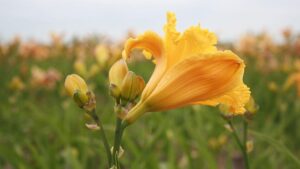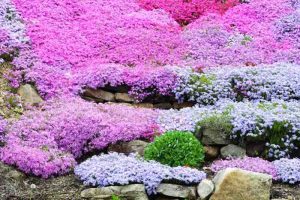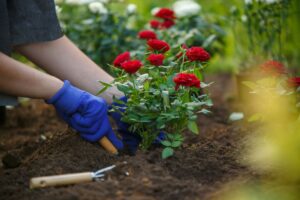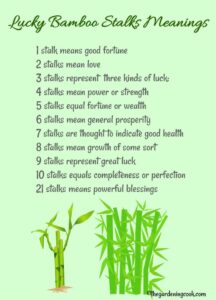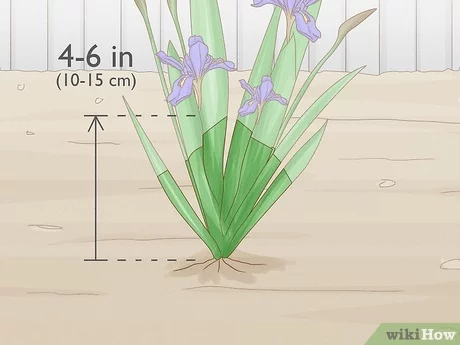Egg Shells and Potted Plants: The Surprising Connection
Egg shells are a common kitchen waste product, but did you know that they can also be used to benefit your potted plants? That’s right, eggshells are a natural source of calcium and other nutrients that can help to improve the health of your plants.
In this article, we’ll explore the surprising connection between eggshells and potted plants. We’ll discuss the benefits of using eggshells as a fertilizer, how to properly use eggshells in your garden, and some of the potential risks associated with using eggshells.

So if you’re looking for a way to give your potted plants a boost, consider using eggshells. They’re a natural, affordable, and effective way to improve the health and beauty of your garden.
1. Egg Shells: The Secret Weapon for Healthy Potted Plants
Egg shells are a great way to add nutrients to your potted plants. They are a natural source of calcium, which is essential for plant growth. Calcium helps to strengthen plant cell walls and promotes root development. It also helps to prevent blossom end rot, a common problem in tomatoes.
To use egg shells, simply crush them up and add them to the soil around your plants. You can also make a tea out of egg shells by boiling them in water for 20 minutes. The resulting liquid can be used as a fertilizer for your plants.
In addition to calcium, egg shells also contain other nutrients that are beneficial to plants, such as magnesium, phosphorus, and potassium. These nutrients help to promote healthy growth and development.
If you’re looking for a natural way to improve the health of your potted plants, egg shells are a great option. They’re easy to use and provide a number of benefits.
Here are some tips for using egg shells to fertilize your potted plants:
- Crush the egg shells into a fine powder.
- Add the powder to the soil around your plants.
- Water the plants well.
- Repeat this process every few months.
You can also make a tea out of egg shells by boiling them in water for 20 minutes. The resulting liquid can be used as a fertilizer for your plants.
Egg shells are a great way to give your potted plants a boost of nutrients. They’re easy to use and provide a number of benefits. So next time you’re looking for a natural fertilizer, reach for the egg carton!
2. How to Use Egg Shells to Improve Your Plants’ Growth
Egg shells are a great way to improve the growth of your plants. They are a natural source of calcium, which is essential for plant growth. Calcium helps to strengthen cell walls and promote healthy root growth. It can also help to prevent blossom end rot, a common problem in tomatoes.
To use egg shells, simply crush them up and add them to the soil around your plants. You can also make a tea from egg shells by boiling them in water for 20 minutes. The tea can then be added to the soil or used as a foliar spray.
Here are some tips for using egg shells to improve your plants’ growth:
- Crush the egg shells into a fine powder. This will make them easier for the plants to absorb.
- Add the egg shells to the soil around your plants, about 1 cup per plant.
- Water the plants well after adding the egg shells.
- Make a tea from egg shells by boiling them in water for 20 minutes. The tea can then be added to the soil or used as a foliar spray.
Egg shells are a safe and effective way to improve the growth of your plants. They are a natural source of calcium, which is essential for plant growth. Calcium helps to strengthen cell walls and promote healthy root growth. It can also help to prevent blossom end rot, a common problem in tomatoes.
3. The Benefits of Egg Shells for Potted Plants
In addition to being a sustainable way to dispose of eggshells, eggshells can also be used as a natural fertilizer for potted plants.
Calcium helps to strengthen plant cell walls and improves the overall health of plants. Eggshells also contain magnesium, phosphorus, and potassium, all of which are essential nutrients for plant growth.Eggshells contain calcium carbonate, which is a key nutrient for plant growth..
To use eggshells as a fertilizer, simply crush them up into a fine powder and mix them into the soil around your plants. You can also make a liquid eggshell fertilizer by boiling eggshells in water for several hours. The resulting liquid can then be added to your plants’ water supply.
Eggshells can also help to improve the drainage of potted plants. The porous nature of eggshells helps to aerate the soil and allow water to drain more easily. This can help to prevent root rot and other problems caused by waterlogged soil.
If you’re looking for a natural and sustainable way to improve the health of your potted plants, eggshells are a great option. They’re easy to use and provide a number of benefits for your plants.
Benefits of Egg Shells for Potted Plants
- Provide calcium, magnesium, phosphorus, and potassium, all of which are essential nutrients for plant growth.
- Help to strengthen plant cell walls and improve the overall health of plants.
- Improve drainage of potted plants.
- Help to prevent root rot and other problems caused by waterlogged soil.
How to Use Egg Shells as a Fertilizer
- Crush eggshells up into a fine powder and mix them into the soil around your plants.
- Make a liquid eggshell fertilizer by boiling eggshells in water for several hours. The resulting liquid can then be added to your plants’ water supply.
Tips for Using Egg Shells as a Fertilizer
- Use eggshells that have been thoroughly cleaned and dried.
- Be sure to crush the eggshells up into a fine powder before adding them to the soil. This will help to ensure that the nutrients are evenly distributed.
- Only use eggshells as a fertilizer for potted plants. Eggshells can be harmful to some outdoor plants, such as tomatoes.
- Avoid using eggshells as a fertilizer for plants that are sensitive to calcium, such as hydrangeas.
4. How to Make Egg Shell Fertilizer for Your Plants
- Gather eggshells.
- Rinse the eggshells in warm water.
- Dry the eggshells in a warm, dry place.
- Grind the eggshells into a fine powder using a mortar and pestle or a food processor.
- Add the powdered eggshells to your potted plants at a rate of 1 tablespoon per gallon of soil.
Eggshell fertilizer is a great way to give your plants a boost of calcium and other nutrients. Calcium is essential for plant growth, and it helps to strengthen plant cell walls. Eggshell fertilizer can also help to improve the drainage of your soil and reduce the risk of root rot.
To use eggshell fertilizer, simply mix the powdered eggshells into your potted plants at a rate of 1 tablespoon per gallon of soil. You can apply eggshell fertilizer to your plants once a month or as needed.
5. Tips for Using Egg Shells in Your Garden
- Use egg shells as a natural pest repellent. Crush eggshells into a fine powder and sprinkle around the base of your plants to deter pests such as aphids, snails, and slugs.
- Add eggshells to your compost pile. Eggshells are a great source of calcium, which is essential for healthy plant growth.
- Use eggshells as a drainage aid in potted plants. Eggshells help to improve drainage by allowing excess water to drain away from the roots of your plants.
- Make your own eggshell fertilizer. To make eggshell fertilizer, simply crush eggshells into a fine powder and mix with water. Allow the mixture to sit for a few days, then strain out the solids and use the liquid fertilizer on your plants.
- Use eggshells as a seed starting medium. Eggshells provide a lightweight and porous medium that is perfect for starting seeds. Simply fill eggshells with potting soil and plant your seeds. Once the seedlings have sprouted, transplant them into a larger pot or garden bed.
Resources
1. The Spruce: How to Use Eggshells in the Garden
This article from The Spruce provides a comprehensive overview of how eggshells can be used in the garden, including information on how to use them as fertilizer, pest control, and drainage. The article is well-written and easy to understand, and it includes helpful photos and illustrations.
2. Gardening Know How: Eggshells for Plants: Benefits and How to Use
This article from Gardening Know How provides a similar overview of how eggshells can be used in the garden, but it also includes some additional information on the benefits of using eggshells, such as how they can help to improve soil drainage and aeration. The article is also well-written and easy to understand, and it includes helpful photos and illustrations.
To Wrap It Up
Egg Shells and Potted Plants: The Surprising Connection
Egg shells are a common kitchen waste product, but did you know that they can also be used to improve the health of your potted plants? Egg shells are a good source of calcium, which is essential for plant growth. They can also help to improve drainage and aeration in the soil, and they can deter pests.
To use egg shells in your potted plants, simply crush them up into a fine powder and sprinkle them on top of the soil. You can also add them to the compost pile. Egg shells will gradually break down and release their nutrients into the soil, providing a slow-release fertilizer for your plants.
So next time you’re cleaning out your kitchen, don’t forget to save those egg shells! They’re a great way to help your potted plants thrive.
Bonus tip: Egg shells can also be used to make your own natural pest repellent. Simply crush up a few egg shells and mix them with water to create a paste. Apply the paste to the leaves of your plants to deter insects.
- Cat Palm vs Majesty Palm: Which Should You Choose? - June 30, 2024
- Flowers That Survive Winter: Discover the Exceptional No. 5 - June 30, 2024
- The Ultimate Guide to the Growth and Care of the Black Pagoda Lipstick Plant - June 29, 2024

